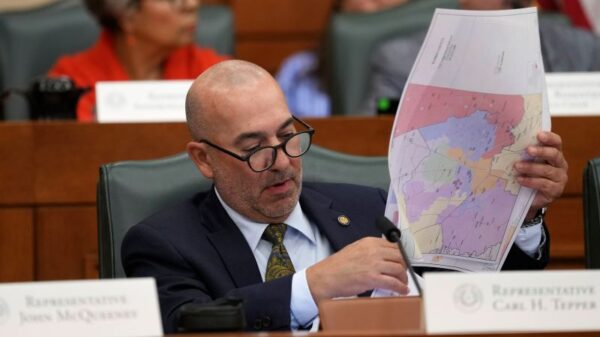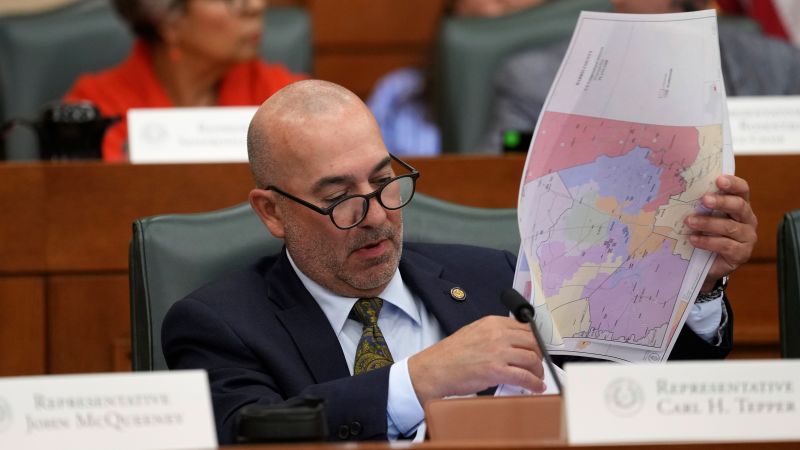A Texas House committee has advanced a new congressional map that could significantly alter the political landscape, potentially impacting five Democratic seats as Republicans push to solidify their majority in the U.S. House ahead of the 2026 midterm elections. This development, supported by former President Donald Trump, aims to create more favorable conditions for Republican candidates.
The proposed map, revealed earlier this week, is designed to address concerns from Texas Republicans regarding the constitutionality of the current congressional districts, which they argue are racially gerrymandered. In contrast, Democrats contend that the changes would disenfranchise voters, particularly among communities of color. The Texas House redistricting committee voted along party lines to approve the map, moving it forward for a full House vote.
Should the map pass, national Democrats have already indicated plans to challenge it legally. Hakeem Jeffries, the U.S. House Minority Leader, is reportedly exploring similar strategies in states such as California, New York, and New Jersey, aiming to reclaim seats currently held by Republicans. The Democrats require a net gain of just three seats to regain control of the House.
The revised Texas congressional map includes 30 districts that former President Trump would have won in the 2024 election, an increase from 27 under the existing boundaries. According to data from the Texas Legislative Council, five additional districts were won by Trump by margins exceeding 10 percentage points.
One of the most contentious changes involves the Austin-area seat currently held by Rep. Greg Casar. The new map may force a primary contest between Casar and fellow Democrat Rep. Lloyd Doggett. Sources close to Doggett suggest he is unlikely to step aside easily, particularly given his substantial campaign war chest of $6.2 million. Doggett has publicly stated that his primary focus is opposing the new Republican map.
Casar has vowed to mobilize voters against what he describes as an “illegal map,” emphasizing the need for collective action to counter the Republican strategy.
Another significant alteration includes the merging of the Houston-area seat held by Rep. Al Green with a vacant seat previously occupied by the late Rep. Sylvester Turner, who passed away earlier this year. Green’s district will undergo the most substantial changes among current representatives. While some speculate that Green will run in the new district, he may face competition from other Democrats already in the race for the Turner seat.
Additionally, the new map aims to reshape two southern Texas districts, currently held by Reps. Henry Cuellar and Vicente Gonzalez, making them more favorable to Republican candidates. Nevertheless, many Democrats believe these seats remain competitive for the centrist incumbents, who typically outperform their party’s statewide and national averages.
As the Texas House moves closer to voting on the new map, the political ramifications will likely reverberate not only within the state but across the nation as both parties prepare for the upcoming midterm elections.

































































